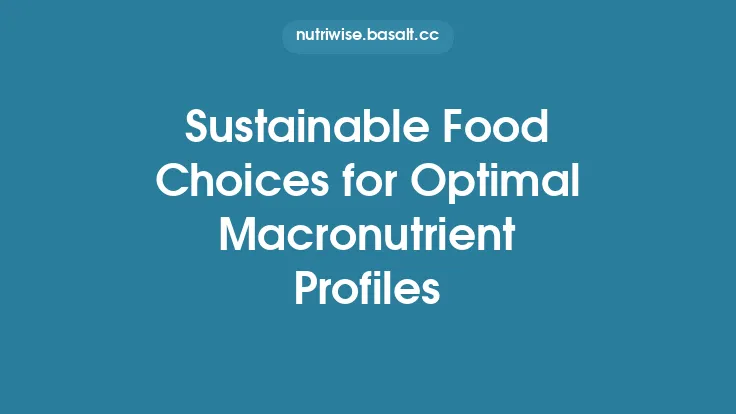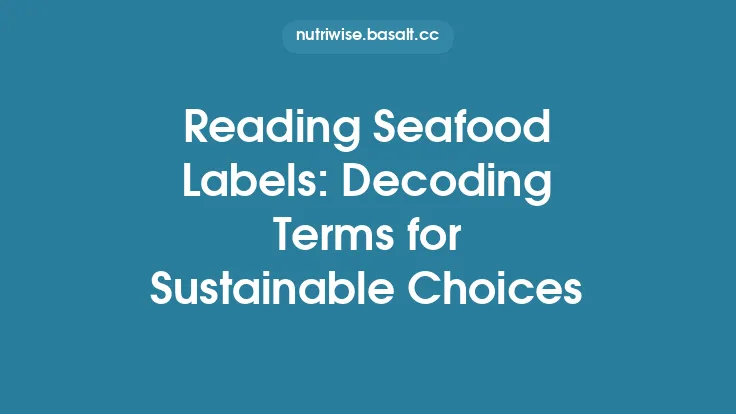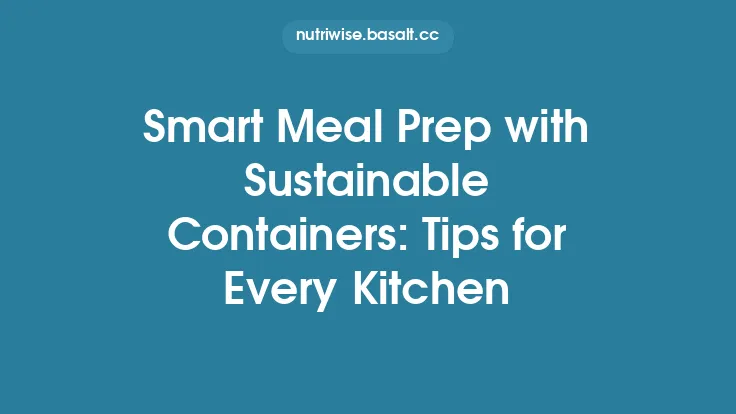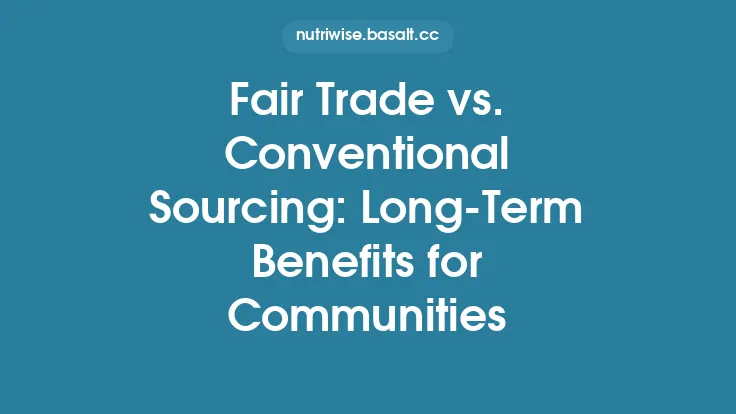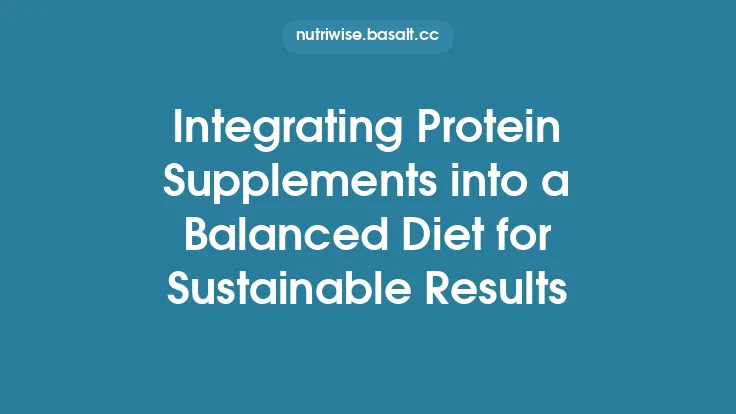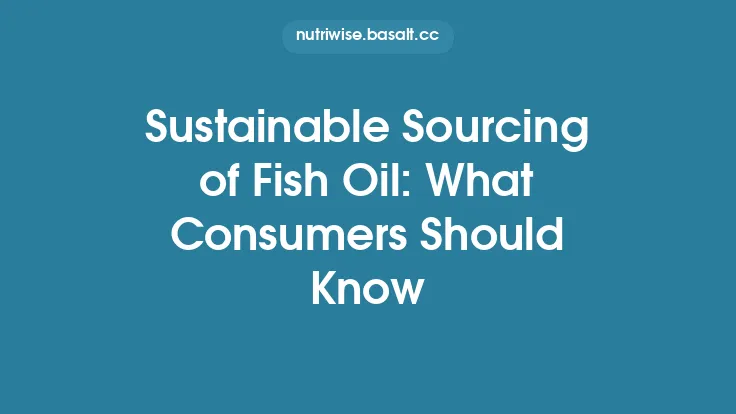The holiday season is a time when kitchens around the world come alive with the aromas of spices, the sizzle of roasting pans, and the comforting hum of family gatherings. While the focus often lands on the finished dishes, the story truly begins long before the first pot is set on the stove: it starts with the ingredients themselves. Choosing where and how those ingredients are sourced can transform a festive feast from a fleeting indulgence into a celebration that honors both cultural heritage and the planet. Sustainable sourcing for holiday ingredients is not a fleeting trend; it is an enduring practice that aligns the joy of tradition with the responsibility of stewardship.
Understanding Sustainable Sourcing: Core Principles
Sustainable sourcing is built on three interlocking pillars:
- Environmental Integrity – Minimizing the ecological footprint of production, processing, and transport. This includes reducing greenhouse‑gas emissions, conserving water, protecting soil health, and preserving biodiversity.
- Social Equity – Ensuring that the people who grow, harvest, and process the ingredients receive fair wages, safe working conditions, and respect for their cultural practices.
- Economic Viability – Supporting supply chains that can endure over time, providing stable markets for producers while delivering reliable quality to consumers.
When these pillars are balanced, the result is a supply chain that can meet the heightened demand of holiday cooking without compromising future generations’ ability to enjoy the same traditions.
Seasonal and Local: The First Line of Defense
Why Seasonality Matters
Seasonal produce is naturally aligned with the climate in which it grows, meaning it typically requires less artificial heating, lighting, or irrigation. For example, root vegetables such as carrots, parsnips, and turnips reach peak flavor and nutritional density in the cooler months of the Northern Hemisphere, making them ideal for winter stews and roasts. Harvesting these crops at their natural peak reduces the need for energy‑intensive storage facilities and extends shelf life without excessive refrigeration.
Mapping Local Food Systems
A practical approach to sustainable sourcing begins with a geographic audit:
| Region | Typical Holiday Ingredients | Sustainable Sources |
|---|---|---|
| Pacific Northwest, USA | Cranberries, hazelnuts, wild mushrooms | Small‑scale farms, community‑supported agriculture (CSA) |
| Mediterranean (Italy, Greece) | Olive oil, citrus, figs | Family orchards, cooperatives with organic certification |
| Scandinavia | Lingonberries, rye, reindeer | Indigenous reindeer herders, forest foraging collectives |
| South Asia (India) | Cardamom, cashews, coconut | Fair‑trade plantations, agroforestry projects |
By identifying which ingredients are naturally abundant in a given region, cooks can prioritize local suppliers, thereby cutting transportation emissions and supporting regional economies.
Certifications and Labels: Decoding the Green
The marketplace is saturated with eco‑labels, each with its own criteria. Understanding these can help consumers make informed choices:
- Organic – Prohibits synthetic pesticides and fertilizers, often encouraging crop rotation and soil health.
- Fair Trade Certified – Guarantees minimum price, fair labor conditions, and community development premiums.
- Rainforest Alliance – Focuses on biodiversity conservation, sustainable land use, and worker welfare.
- Regenerative Agriculture – A newer category emphasizing practices that restore soil carbon, increase water retention, and promote ecosystem services.
When selecting holiday ingredients, look for a combination of these certifications where possible. For instance, a fair‑trade, organic cocoa powder used in a traditional mulled chocolate drink not only reduces pesticide runoff but also supports cocoa farmers’ livelihoods.
The Role of Traditional Knowledge in Sustainable Harvesting
Many cultures have long‑standing practices that inherently embody sustainability. Indigenous communities across the globe have developed harvesting calendars, rotational foraging, and seed‑saving rituals that keep ecosystems resilient.
- Foraging Ethics – In Nordic countries, the “right of access” (Allemansrätten) is balanced by guidelines that limit the amount of berries or mushrooms taken per person, ensuring wild populations remain robust.
- Seed Preservation – In Mediterranean villages, families maintain heirloom seed banks for wheat and barley, preserving genetic diversity that can adapt to climate variability.
- Rotational Grazing – In the Andean highlands, llamas and alpacas are moved seasonally across pastures, preventing overgrazing and allowing native grasses to recover.
Incorporating these practices into modern holiday planning—such as sourcing wild cranberries from community‑managed forests—honors cultural heritage while reinforcing ecological balance.
Building a Sustainable Holiday Pantry: Practical Steps
- Plan Ahead with a “Zero‑Waste” Inventory
- Conduct a pantry audit three months before the holidays. Identify items that can be used in multiple dishes (e.g., dried herbs, nuts) and prioritize those that have a long shelf life when stored properly.
- Choose Bulk and Refillable Options
- Purchase spices, grains, and legumes in bulk from refill stations. This reduces packaging waste and often allows you to select ethically sourced varieties.
- Prioritize Plant‑Based Staples with Low Environmental Impact
- While the article avoids a deep dive into plant‑based menu design, it is worth noting that legumes (lentils, chickpeas) and whole grains (farro, spelt) generally have lower carbon footprints than animal‑derived ingredients.
- Support Direct‑to‑Consumer Models
- Many small farms now offer online ordering and home delivery. Buying directly cuts out middlemen, reduces transport distances, and often provides transparency about farming practices.
- Utilize Seasonal Preservation Techniques
- Freeze, can, or dry excess produce soon after harvest. For example, blanching and freezing green beans or drying herbs preserves flavor and reduces waste.
Assessing Carbon Footprint: From Farm to Table
A simplified carbon accounting model can help quantify the environmental impact of holiday ingredients:
- Production Emissions (E₁) – Emissions from cultivation, including fertilizer application, machinery use, and on‑farm energy.
- Processing Emissions (E₂) – Energy used in cleaning, cutting, drying, or packaging.
- Transport Emissions (E₃) – Fuel consumption for moving goods from farm to processor, distributor, and finally to the consumer.
- Retail & Storage Emissions (E₄) – Energy for refrigeration, lighting, and shelf life extension at stores.
- Cooking Emissions (E₅) – Energy used during preparation (oven, stovetop, etc.).
Total carbon footprint (CF) = E₁ + E₂ + E₃ + E₄ + E₅.
By selecting ingredients with lower E₁ (e.g., organically grown, low‑input crops) and minimizing E₃ (local sourcing), the overall CF can be significantly reduced. Tools such as the “Food Carbon Calculator” (available through many environmental NGOs) allow households to input quantities and receive an estimate of their holiday meal’s carbon load.
Water Stewardship in Holiday Ingredient Selection
Water scarcity is a growing concern in many agricultural regions. Sustainable sourcing includes evaluating the water footprint of each ingredient—how much freshwater is used throughout its life cycle.
- Low‑Water Crops – Cereals like barley and oats, as well as nuts such as pistachios (when sourced from water‑efficient orchards), have comparatively lower water footprints than water‑intensive crops like almonds or rice.
- Rain‑Fed vs. Irrigated – Preference for rain‑fed produce reduces reliance on groundwater extraction. In regions where rain‑fed agriculture is common (e.g., parts of the Mediterranean), selecting locally grown olives or figs supports water‑wise farming.
- Certification Indicators – The “Better Cotton Initiative” and “Sustainable Rice Platform” include water‑use metrics in their standards, providing a quick reference for consumers.
When planning holiday menus, a simple rule of thumb is to balance high‑water ingredients with low‑water alternatives, ensuring the overall water demand stays within sustainable limits.
Ethical Meat and Seafood: Navigating Complex Supply Chains
While the article does not delve into plant‑based alternatives, many holiday traditions still feature meat and seafood. Sustainable sourcing in this realm requires careful scrutiny:
- Regenerative Grazing – Look for farms that practice holistic planned grazing, where livestock are rotated to mimic natural herd movements, improving soil carbon sequestration.
- Certified Sustainable Fisheries – Labels such as MSC (Marine Stewardship Council) certify that fish stocks are harvested at levels that allow populations to replenish.
- Local Game – In regions where hunting is regulated, sourcing wild game (e.g., venison, wild boar) from licensed hunters can be more sustainable than industrially farmed meat, provided the harvest respects population dynamics.
Engaging directly with producers—through farm visits, virtual tours, or farmer‑market conversations—can reveal the nuances of their practices and help verify claims.
Reducing Packaging Waste: From Supplier to Table
Packaging is often an overlooked contributor to the environmental impact of holiday ingredients. Strategies to minimize waste include:
- Reusable Containers – Encourage suppliers to use returnable glass jars for spices, honey, and preserves. Many artisanal producers already operate refill programs.
- Compostable Materials – When single‑use packaging is unavoidable, opt for certified compostable films or paper that can be processed in municipal compost streams.
- Bulk Bins – Many grocery stores now feature bulk sections for nuts, dried fruit, and grains, allowing shoppers to bring their own containers.
By advocating for these practices, consumers can drive market demand toward more circular packaging solutions.
Community Engagement: Building Resilient Food Networks
Sustainable sourcing is not solely an individual effort; it thrives on collective action. Consider these community‑focused initiatives:
- Holiday Food Co‑ops – Groups of families pool resources to purchase large quantities of sustainably sourced ingredients directly from farms, reducing per‑unit costs and carbon emissions.
- Seed‑Saving Workshops – Organize or attend events where participants exchange heirloom seeds, ensuring genetic diversity for future harvests.
- Cultural Exchange Potlucks – Invite members of different cultural backgrounds to share traditional holiday dishes prepared with locally sourced ingredients, fostering cross‑cultural appreciation and knowledge transfer.
These activities reinforce the social pillar of sustainability, strengthening ties between producers, consumers, and cultural heritage.
Measuring Success: Indicators for a Sustainable Holiday
To evaluate the effectiveness of sustainable sourcing efforts, households and organizations can track a set of simple indicators:
| Indicator | How to Measure | Target for Holiday Season |
|---|---|---|
| Carbon Emissions (kg CO₂e) | Use a food carbon calculator for each ingredient | ≤ 30% reduction vs. previous year |
| Water Use (liters) | Reference water‑footprint databases for each product | ≤ 20% reduction vs. baseline |
| Packaging Waste (kg) | Weigh packaging discarded after shopping | ≤ 50% of previous holiday season |
| Local Content (%) | Percentage of ingredients sourced within 100 km | ≥ 60% |
| Fair‑Trade/Organic Share (%) | Proportion of certified items | ≥ 70% |
Regularly reviewing these metrics not only quantifies environmental benefits but also reinforces the habit of mindful sourcing for future celebrations.
Looking Ahead: Integrating Technology and Tradition
Emerging technologies are poised to enhance sustainable sourcing without eroding the cultural essence of holiday cooking:
- Blockchain Traceability – Distributed ledgers can provide immutable records of an ingredient’s journey, from farm to fork, giving consumers confidence in sustainability claims.
- AI‑Driven Demand Forecasting – Small farms can use predictive analytics to align production with holiday demand, reducing overproduction and waste.
- Digital Marketplace Platforms – Apps that connect consumers directly with certified producers streamline the procurement of ethically sourced items, especially in regions where traditional supply chains are fragmented.
When adopted thoughtfully, these tools can complement age‑old customs, ensuring that the flavors of the season are preserved for generations to come.
By weaving together environmental stewardship, social responsibility, and cultural reverence, sustainable sourcing transforms holiday meals from mere consumption events into acts of celebration for the planet and its peoples. The choices made at the grocery aisle—or at the farmer’s market—echo far beyond the dinner table, nurturing ecosystems, supporting communities, and honoring the timeless traditions that make each festive season truly special.
